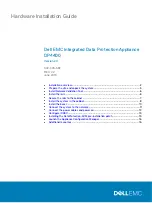
13-58
Testing and Maintenance
BE1-951
Mode 2 - One-Shot Nonretriggerable
Step 1
Prepare the 162 timer for Mode 2 testing by transmitting the commands in Table 13-92 to the relay.
Table 13-92. x62 Mode 2 Test Commands
Command
Purpose
A=
Gain write access
SL-N=NONE
Zero out custom logic settings. Overwrite with logic=none settings.
Y
Confirm overwrite
SL-N=T162
Sets T162 as custom logic name
SL-162=2,143,0
Enables 162 1-shot, nonretriggerable mode, 143 initiate, no
blocking
SL-143=3
Enables 143 switch momentary Pulse mode
SN-143=162_INI,INI,NORMAL
Name switch 143 to make SER report easier to read.
S0-162=400m,20s
Sets 162 delay at 400 milliseconds
Sets 162 dropout at 20 seconds
EXIT;Y
Exit and save settings.
Step 2 Transmit the commands of Table 13-93 to the relay. These commands supply the 162 timer with
a momentary initiate input by pulsing the 143 switch from a FALSE state to a TRUE state and then
back to a FALSE state. You may view the state changes of the 143 switch at screen 1.5.4 of the
front panel HMI.
NOTE
The 143 switch action is performed twice in this test. To illustrate the action of the timer
mode, the commands of Table 13-93 should be executed as quickly as possible. Ideally,
this test should be repeated within 20 seconds. If this is a problem, try extending the
dropout timer setting to 30 seconds.
Table 13-93. x62 Mode 2 Timer Initiate Commands
Command
Purpose
A=
Gain write access
CS-143=P
Selects 143 for pulse F-T-F operation
CO-143=P
Executes 143 pulse F-T-F operation
CS-143=P
Selects 143 for pulse F-T-F operation
CO-143=P
Executes 143 pulse F-T-F operation
EXIT
Exit select and operate mode
Step 3 Use the RS-LGC command to retrieve logic variable data from the SER. Verify that a 143
FALSE-TRUE-FALSE pulse action was logged and that approximately 400 milliseconds after the
initial 143 FALSE-TRUE-FALSE initiate signal action, the 162 timer output went TRUE. Then,
approximately 20 seconds later, duration timer T2 expired and the timer output went FALSE
















































